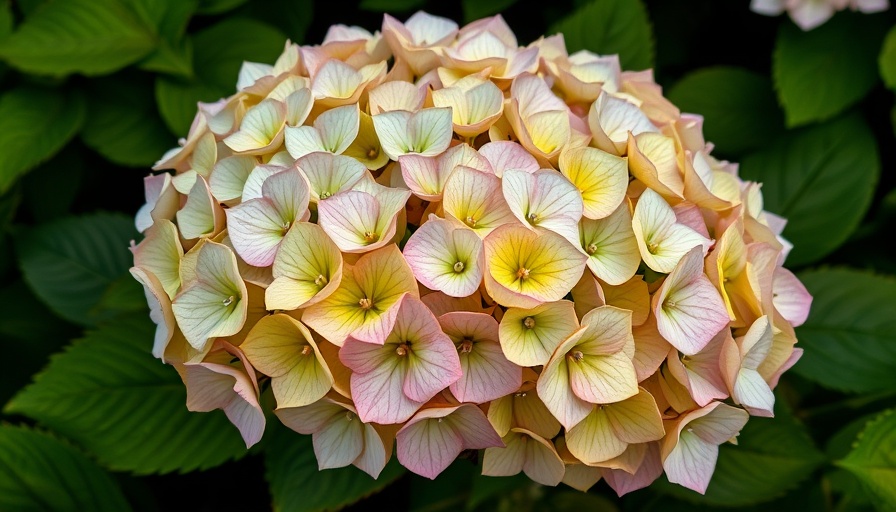
The Magic of Hydrangeas and Their Importance in Landscaping
Known for their stunning blooms, hydrangeas add a splash of color and life to landscapes, yet their beauty can sometimes lead to frustration when they fail to blossom. Understanding the reasons behind a hydrangea’s lack of flowers not only helps gardeners nurture these plants better but also enhances the aesthetics of their gardens. In this article, we’ll explore seven common issues that can prevent hydrangeas from blooming and provide practical solutions for each.
Understanding the Growth Habits of Hydrangeas
Before diving into problems, it's helpful to know that hydrangeas generally fall into categories based on their blooming habits, particularly the bigleaf and oakleaf varieties, which often flower on old wood. This means that any damage to last season’s growth can lead to a disappointing floral display. Correctly identifying your hydrangea’s type and blooming habits can set the groundwork for understanding why it may be withholding its stunning blossoms.
1. Hungry Deer: A Detriment to Flowering
Deer are known to be fond of hydrangeas, especially the buds needed for blooming. If deer frequent your garden, consider installing protective fences or utilizing deer repellents to keep them at bay. Additionally, planting deer-resistant species nearby can divert their attention.
2. Nutrient Imbalance: The Nitrogen Dilemma
While nitrogen is a crucial nutrient for plant growth, excess nitrogen can cause lush foliage at the expense of blossoms. Use balanced fertilizers to encourage a harmonious growth of blooms and leaves. Understanding soil nutrient levels through testing can help you make informed choices for your garden's health.
3. Climate Concerns: Coping with Harsh Winters
Extreme winter conditions can damage hydrangeas, particularly if they are not adequately insulated against cold. Consider mulching around the plant base and using protective covers during cold snaps to encourage better springtime recovery and blooming potential.
4. Water: The Secret Ingredient
Hydrangeas thrive in moisture, and a lack of water can lead to stress that impacts blooming. Ensure your hydrangeas receive adequate watering, especially during dry spells. An integrated irrigation system can help maintain consistent moisture levels.
5. Pruning Practices: Timing is Everything
Pruning at the wrong time can significantly impact blooming. Always prune hydrangeas according to their specific type, and avoid heavy pruning in late winter or early spring, which can remove developing buds. Instead, prune right after flowering to allow for new growth.
6. Sunlight: Finding the Perfect Balance
While hydrangeas love light, too much direct sunlight can scorch their leaves and prevent blooming. Aim for a balance whereby they receive afternoon shade or filtered sunlight to promote healthy growth. Understanding your garden’s sun exposure is vital in placing hydrangeas for optimal performance.
7. The Shade Overload
Conversely, insufficient sunlight can hinder blooming as well. If your hydrangeas are too shaded, consider relocating them or trimming back nearby foliage to allow for more sun exposure while ensuring they remain protected during the hottest parts of the day.
Common Misconceptions About Hydrangeas
A prevalent myth is that hydrangeas are entirely no-maintenance plants. In reality, their blooming potential is influenced by various environmental factors and care practices. Understanding these principles is key to ensuring your hydrangeas offer the vibrant display you desire.
Practical Tips for Hydrangea Health
To foster a blooming spectacle of hydrangeas, regular evaluation of growing conditions, watering schedules, and soil health should be part of any gardener’s routine. Using organic gardening practices, such as composting and natural pest repellents, can also bolster overall plant wellness while being environmentally friendly. Lastly, don’t hesitate to seek advice from local gardening groups or resources, which can provide tailored tips based on your regional climate and conditions.
Embracing the Journey of Gardening
Caring for hydrangeas can be a learning experience driven by patience and observation. By understanding their needs and effectively troubleshooting problems, gardeners can boost not only the blooms of their hydrangeas but also enhance the overall beauty of their backyards.
Ready to transform your garden into a blooming oasis? Start today by evaluating your hydrangeas and implementing these helpful tips, ensuring your efforts yield colorful rewards in the growing seasons to come.
 Add Row
Add Row  Add
Add 




Write A Comment